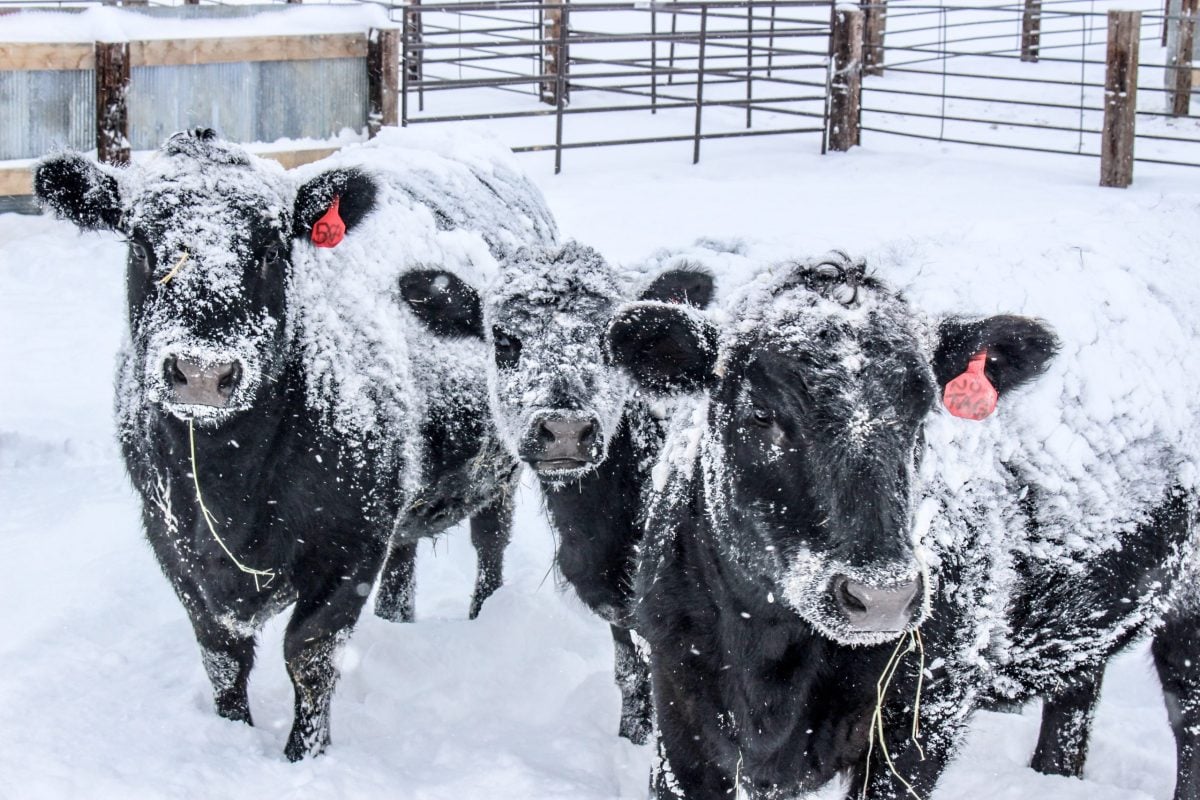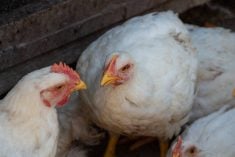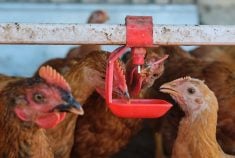Another province in Atlantic Canada has booked its first outbreak of highly pathogenic avian influenza in domestic birds this year — this time in a non-commercial flock in southeastern New Brunswick.
The Canadian Food Inspection Agency said it confirmed the presence of high-path avian flu on Monday in a small flock at Turtle Creek, about 20 km southwest of Moncton.
The agency didn’t say what types of birds or how many were affected, nor with what subtype of avian flu.
CFIA has, however, previously confirmed high-path H5N1 in wild birds in the province, including in six American crows and a bufflehead at Norton, southeast of Turtle Creek, and in a black-backed gull, red-tailed hawk and snowy owl at Dundas, north of Moncton. All those cases were found during February.
Read Also

Klassen: Feedlot margins will determine feeder prices
There were no Western Canadian feeder cattle sales for week ending December 27. The shortened holiday week is always a…
As has been the case in Canada’s other outbreaks in domestic birds this year, the infected New Brunswick premises has been placed under quarantine, CFIA said, adding it will be setting up movement control measures on other farms within the area.
Since our report on Monday on this website, CFIA has also confirmed more outbreaks of avian flu in commercial poultry and backyard birds, including:
- a poultry flock at Camrose County in Alberta, with high-path H5N1, on Monday;
- a small non-commercial backyard flock in Kelowna, B.C., with high-path H5N1, also on Monday;
- a poultry flock near Wingham in southwestern Ontario’s Huron County, with high-path H5N1, on Tuesday; and
- a poultry flock in the R.M. of Montrose, southwest of Saskatoon, with an unspecified type and subtype of high-path avian flu, also on Tuesday.
CFIA didn’t specify what types of birds or how many were affected in any of those cases. Ontario’s Feather Board Command Centre, in a notice Tuesday to poultry and egg producers in Huron County, said the case there was in a “larger-scale” poultry flock showing “elevated mortality.”
The new cases bring the total of avian flu outbreaks in commercial Canadian poultry flocks so far this year to 43, across seven provinces: 16 in central and southern Alberta, 15 in southern Ontario, four in Quebec’s Estrie, four in western Saskatchewan, two in western Nova Scotia and one each in B.C.’s Okanagan and eastern Manitoba.
CFIA also continues setting up primary control zones (PCZs) surrounding infected premises, in which all movement of domestic birds and poultry products — whether in, out or through — is “strictly controlled” and requires CFIA permits. As of Wednesday, CFIA had officially set up 40 PCZs across the country.
Each of the 10 provinces has also now confirmed cases of avian flu in wild birds and/or non-commercial or backyard flocks in this latest run of high-path avian flu through Canada.
As of April 21, CFIA has put the estimated number of commercial and non-commercial domestic birds affected by avian flu in Canada this year at about 717,000.
Further south, the U.S. Department of Agriculture’s Animal and Plant Health Inspection Service (APHIS) since February has confirmed high-path avian flu in commercial poultry and/or backyard flocks in 29 states, including six on the Canadian border.
As of April 16, such cases have so far been found in Colorado, Connecticut, Delaware, Idaho, Illinois, Indiana, Iowa, Kansas, Kentucky, Maine, Maryland, Massachusetts, Michigan, Minnesota, Missouri, Montana, Nebraska, New Hampshire, New York, North Carolina, North Dakota, Ohio, Pennsylvania, South Dakota, Texas, Utah, Virginia, Wisconsin and Wyoming.
Across those states, APHIS said Wednesday that high-path avian flu has so far this year affected over 33 million domestic birds, including both commercial poultry and backyard flocks.
U.S. Agriculture Secretary Tom Vilsack on Wednesday announced the transfer of almost US$263 million from the U.S. Commodity Credit Corporation over to APHIS, to “directly support the response efforts” against avian flu. — Glacier FarmMedia Network
















